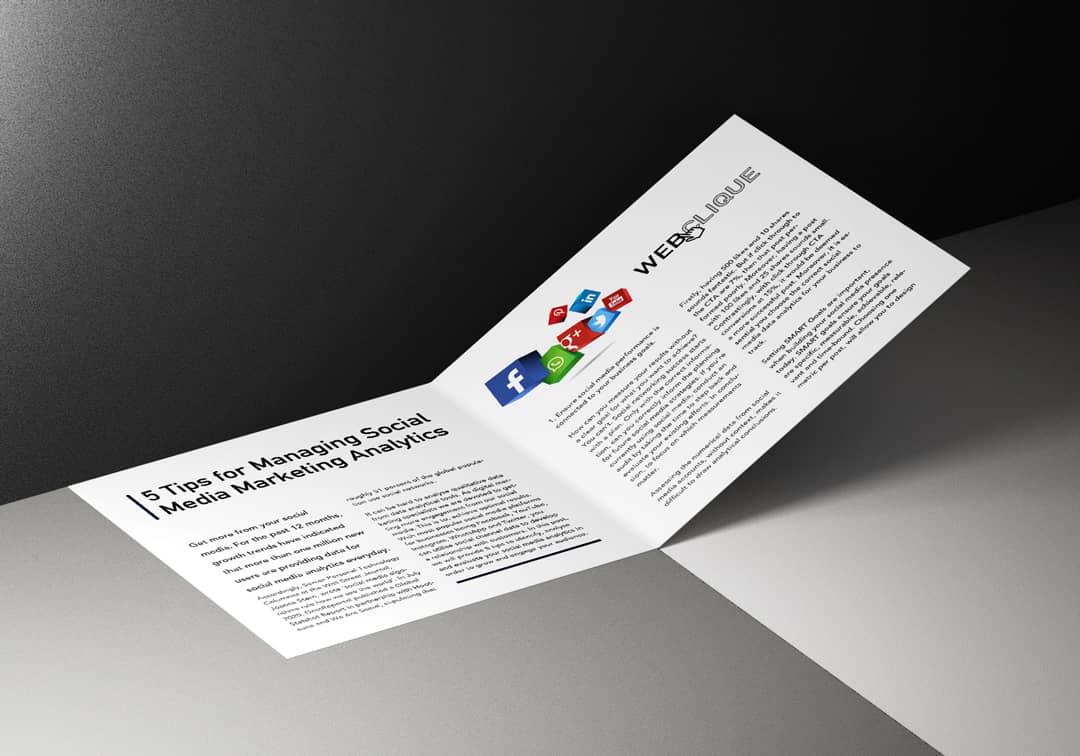
In the past 12 months growth trends have indicated, that more than one million new users are providing data for social media analytics every day. – Accordingly the Senior Personal Technology Columnist at the Wall Street Journal, Joanna Stern, wrote ‘social media algorithms rule how we see the world‘.
In July 2020, DataReportal published a Global Statshot Report in partnership with Hootsuite and We Are Social, stipulating that roughly 51 percent of the global population use social networks.
It can be hard to analyse qualitative data from data analytical tools. As digital marketing specialists we are devoted to getting more engagement from our social media. This is to, achieve optimal results. With the most popular social media platforms for businesses being Facebook, YouTube, Instagram, WhatsApp and Twitter, businesses can utilise social channel data to further develop their relationship with customers.
In this post, we will provide 5 tips to identify, analyse and evaluate your social media analytics in order to grow and engage your audience.
1. Ensure social media performance is connected to your business goals.

How can you measure results without a clear goal of what you want to achieve?
Assessing the numerical data from social media accounts, without context, makes it difficult to draw analytical conclusions. Firstly, having 500 likes and 10 shares sounds fantastic. But if click from the CTA are 7%, then that post performed poorly. Moreover, having a post with 100 likes and 25 shares sounds small. Contrastingly, with click through CTA conversions at 15%, it would be deemed a more successful post. Moreover, it is essential you choose the correct social media data analytics for your business to track.
Social networking success starts with a plan. Only with the correct information, can you correctly inform the planning for future social media strategies. If you’re currently using social media, conduct an audit by taking the time to step back and evaluate your existing efforts. In conclusion, it is essential to focus on which measurements matter.
Setting SMART Goals is essentailly, when building your social media presence. SMART goals ensure your goals are specific, measurable, achievable, relevant and time-bound. – Law, Thomas J. “NEW YEAR’S RESOLUTIONS: 20 TOP NEW YEAR’S RESOLUTION IDEAS.” Oblero, 31 Dec. 2020. Web. 18 Jan. 2021.
Choosing one metric per post, will allow you to design each post with that metric in mind. Using specific CTAs will make it easier for your audience to act. This will make it easier for you to collect data and evaluate success.
Aligning your social media efforts to a concrete purpose will prevent you from posting aimlessly.
2. Add context to the data you pull.

After gathering your social media analytical data, you must evaluate the performance. Don’t underestimate it either, you must determine what caused any spike or valleys and which factors you haven’t accounted for. By examining the larger perspective in trends from your social performance, you can truly assess how strategies are performing. Examples include: seasonal holidays, popular posting times, big announcements and campaigns.
In this way, using the right tools to read your data will allow you to identify which social media platforms are right for you. As explained in this post, more is not always better. Non-profit organisations may feel more strongly about building awareness, than gaining traffic. Therefore, customer rendition could be more essential than revenue generated.
3. Optimise your accounts for engagement.

A fully optimised profile, with consistent business information will improve your search engine ranking. Stand out, by using this practise when competitively analysing your social media presence. In addition, optimise your social media channels with keywords, images and the correct account information.
Identify your audience by spending the time to develop your audience personas. By using social media marketing analytics, you can discover the psychographic and demographic attributes from your most engaged customers. What is more, you can target your audience even better.
You must track what works and what doesn’t when implementing a social networking strategy. In a way, target your audience by remarketing to calibrate your efforts and make improvements. ‘Understand your audience by viewing, what other brands they follow, what are they interested in other than your company and what publications they favour’ – Feldman, B. (2017, March 14) 12 Ways to Get the Most Out of Your Social Analytics.
If you take time, you will keep your social media presence organised whilst examining your contents’ reach. This is easily produced by creating an editorial calendar. We provide our customers with the analytics tools to provide insight into social media marketing efforts, which can help track the analytical data that matters most.
After 2020’s rollercoaster, social media platforms will develop more ways to monetise and we cannot predict exactly what will transpire in 2021.
4. Find new ways to connect.

Once you have a clear picture of who your audience, it is time to look for ways new ways to reach more people just like them. You can do this by inspecting individual performance and the timing of each post. You can use the same post on different media platforms, at different times in the day.
When revisiting your data, find the best time to post by assessing the dismal engagement with your target audience. When a brand is ready to expand internationally, they used lookalike audiences based on their top customers in top performing locations, to reach new potential customers in new locations.
Experiment with riding trends and joining hashtags. This is a great opportunity to build off trending topics and show off your brand voice. With the effectiveness to increase the noticeability of your social media marketing, hashtags are can be more compelling than keywords.
Things won’t always be clear, but it’s about learning from what works. You can appropriately respond when you are aware of the conversations that are happening about your business online. You are in the position to use analytical evidence for your marketing.
5. Use the right tools to monitor your activity.

Adapt your social network marketing plan to determine which social media channels work best. By using Google Analytics, you can identify your top performing channels from the social referral section. Use this to determine which social channels drive the most traffic to your site.
You can save time by automating repetitive tasks, and complete work in bulk by using scheduling tools. Use this to find out which tactics and strategies succeeded. Do this by using social media marketing tools that show you how better focus your time, effort, and budget.
Web Clique use analytical tools to create social media performance reports. We share them with our clients, team, stakeholders, and managers. Our CEO often reads analytical data in real-time through our CRM’s using a multi-channel dashboard.
With the right tools, you can not only use them to analyse and improve results, but engage you can engage with customers and provide substantial customer service.
It’s all in the data.
Social media analytics reveal opportunities and threats when building your digital marketing plan.
Useful insights can be hard to examine when trying to increase ROI.
To better use your social media data, get in touch with us.
Tell us your favourite tip? Let us know @webclique on Twitter!

